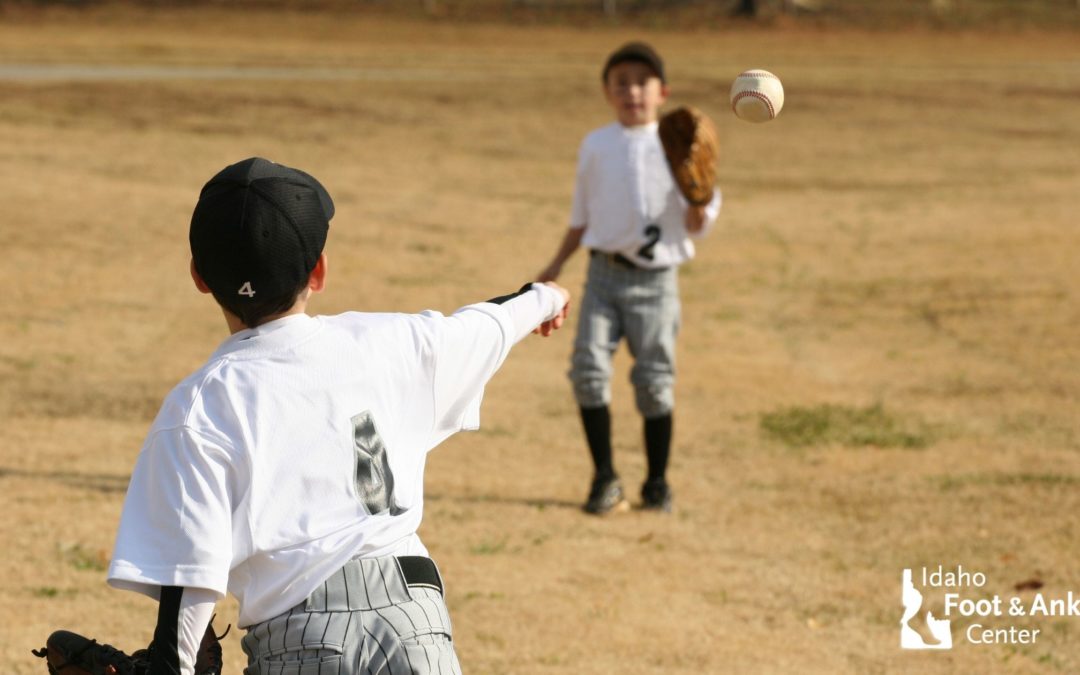Winter seemed to come a bit late this year! However, before you know it the sun will be shining a little more and spring sports will be starting. The American College of Foot and Ankle Surgeons (ACFAS) wants to remind parents and coaches that as young athletes increase their participation in outdoor sports this spring, it can also bring an increased risk of foot and ankle injuries. If your athlete gets injured, it is important to seek treatment as soon as possible.
Overuse injuries, such as stress fractures, are a major risk factor for younger athletes whose bones are still growing. Parents and coaches need to pay special attention to any child limping off of the field and to watch for symptoms of common injuries. This can include swelling, bruising, pain during normal activity, and sometimes even tissue tears. Athletes should never be encouraged to play through the pain, as this can often cause more damage to the injured area and longer recovery times.
There are things that parents and coaches can do to help keep their athletes safe and take the necessary precautions to prevent foot and ankle injuries. Follow these tips to help your young athletes prevent foot and ankle injuries that can occur when going from indoor to outdoor sports:
- Before you start the new season, get a wellness check-up. This can enable the doctor to check for any possible health concerns that may increase the chances of injuries.
- Start out slow. Avoid pushing your children too hard when they start playing. Talk to the coach about gradually increasing playing time. This helps your child’s feet and ankles become accustomed to the activity needed to play the sport. By slowly conditioning your body, it can help prevent injuries and improve their performance during the season.
- Wear proper, broken-in shoes. Different sports require different shoes. Wearing the appropriate, well-fitting, broken-in athletic shoes designed for a specific sport can eliminate heel and toe discomfort and can improve your child’s performance.
- Watch their technique. As you cheer on your athlete, don’t ignore any differences you notice in your child’s form or technique. This can be an early warning sign that something is wrong.
- Insist on open communication if your child has pain. Let your child know that they need to inform you of any pain or discomfort they have as soon as it occurs. Overuse injuries such as Achilles tendonitis and shin splints can be subtle and develop overtime. The sooner an injury can be detected, the sooner it can be treated.
- If an injury occurs, remember RICE. Often, an injured foot or ankle can be healed with rest, ice, compression and elevation (RICE). If your child complains of foot or ankle pain, have them take a break from playing and allow time for recovery.
At Idaho Foot and Ankle Center, we provide foot care for the whole family! If you sustain an injury, contact Dr. Kylin Kovac and Dr. Jed Erickson first to ensure you get the right diagnosis and the right treatment as soon as possible. We even offer same day appointments for injuries and can take X-RAYS of your injury right in our office.
We also offer innovative treatments like MLS Laser Therapy, which is used to treat many different conditions including pain or swelling from an injury. If anyone in your family has sustained an injury or is experiencing foot or ankle pain, contact Dr. Kylin Kovac for an evaluation. He is highly qualified and ready to help you get back to the activities and sports you love.
Some content provided by THE ACFAS.



Recent Comments